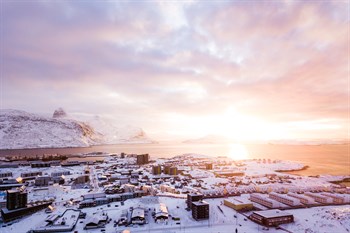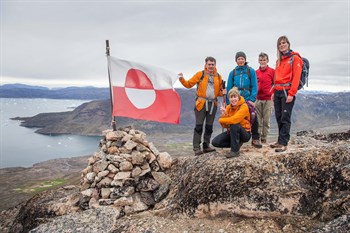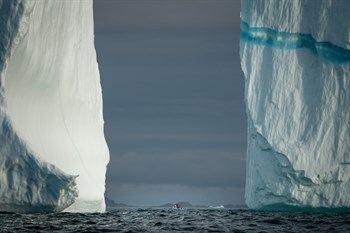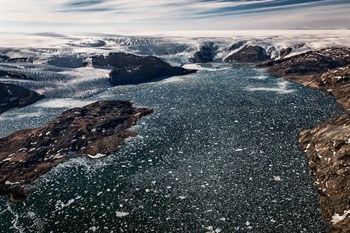
Greenland: Lord of the Lights (Aurora Borealis)

A spectacle to behold, the Northern Lights have inspired wonderment and reverence for centuries. But what are they? Where and when can you see them? We put this blog post together to answer some of these questions and explore the topic further.
What are the Northern Lights?

When solar radiation reaches the Earth, they strike the atoms in Earth’s thermosphere, and electrons are raised to a to a higher energy state or ionizing molecules, giving them a negative charge. As they lose energy, this released in the form of photons. These excited photons themselves yield the Northern Lights.
The variety of visible colors are caused by the particle’s collision with different elements and altitudes; oxygen creates yellows and greens and nitrogen creates reds, violets and sometimes blue when inoized. These colors also happen at different altitudes, depending on where those elements are most commonly found: at higher altitudes you will find more nitrogen, and at lower altitudes more oxygen. The peak of the spectacle are "coronal" auroras, where the Lights spreading out from a central point, like fireworks.
Why do the Lights dance?
The Northern Lights have long been witnessed to move in waves, in a "dancing" fashion. Nasa has put forward that the auroras appear to dance due to the way in which magnetic field lines are broken and reformed as they hit the thermosphere. Lines change into new shapes, changing the distance in relation to the earth's atmosphere, leading to the brightening, waving and changing of the Lights.
Snap, crackle, pop?
Pliny the Elder, in Historia Naturalis, an early encyclopeadia written in Latin in AD77 about an auroral display in the days of Ancient Rome:
" In the time of the Cimbrian warres (120-101 BC), we have been told, that Armour was heard to rustle, and the Trumpet to sound out of Heaven...The Amerines and Tudertes saw men in armes in the skie, rushing and running one against another from the East and West"
As this historical account shows, for centuries it has been reported that the auroras make noises, a crackling or a hissing sound. Commonly dismissed as imaginary, National Geographic report on some recent findings which suggest that it may not be imgainary after all. Research from Unto K. Laine shows that pockets of warm air rise and become trapped by colder air above and below. Known as an inverison layer. When a geomagnetic storm hits this layer, the air and energy is released, and sounds are generated.
Where are the best places to see the Northern Lights?
The Northern Lights occur are high latitudes in places such as Alaska, northern Canada nd Iceland, in an Auroral "band" around the poles. But what about Greenland?
It turns out that Greenland has a near perfect combination of all of the elements necessary to see the Northern Lights. The town of Kangerlussuaq, population 499, has become popular in recent times due to a very stable climate that yields approx. 300 days a year of clear skies making the conditions perfect for experiencing this amazing phenomenon. Even Nuuk, the capital of Greenland, has spectacular shows of the lights regardless of the (minimal) light pollution that is present. Even so, the Lights remain elusive, and often require a bit of a hunt in order to be seen.
When is the best time to see the Northern Lights?

Whilst it is possible to see the northern light on the shoulders of the fall and spring, winter is easily the best time to see them. Late September to March and are brightest around local midnight. They also tend to be most prominent after sunspot and solar flare activity when extra radiation is imitted form the sun. You can get 30-minute aurora updates from the NOAA satellites to get a clearer view.
Ready to tick it off the bucket list?

From all of us at Greenland Adventures, we hope to see you this winter, where we can marvel over the wonders of the Aurora Borealis together. For more information about the Northern lights and our tours, visit Greenland.is








 See what our customers have to say about us!
See what our customers have to say about us!





